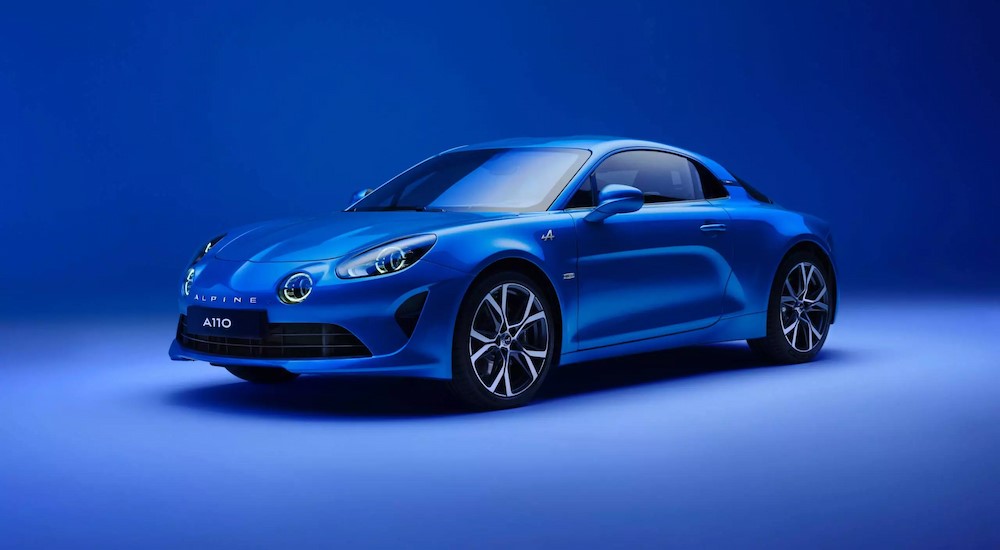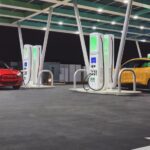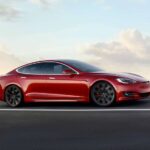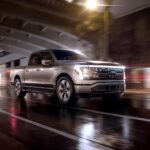From macarons, Bordeaux, and the eponymous fries to the Statue of Liberty, the layout of Washington, DC, and 7’4” NBA big man Victor Wembanyama, there are a few French contributions to American culture that are undoubtedly très magnifique. However, French vehicles have never seen significant success in the US market. Renault was probably the most successful with a run of sedans like the LeCar, Dauphine, and Fuego Turbo, but it pulled out of North America in the late 1980s when Chrysler bought out its stake in AMC.
Now, some 40 years later, it looks like Renault is (sort of) returning to US shores. Earlier this year, Renault announced that its Alpine performance sub-brand will make its way to the North American market in the near future, introducing two new all-electric models and potentially establishing a sales channel with automotive retail giant AutoNation. “Our goal is to expand from a niche segment brand to a fully-fledged global brand,” said Laurent Rossi, CEO of Alpine.
The expansion is part of a wider reimagining of the Alpine brand that will see the automaker introduce seven new all-electric models by 2030. Alpine plans to sunset the gas-powered A110, the company’s only current production model, as it works to achieve net zero carbon emissions status. When can US drivers expect to get behind the wheel of an Alpine, what will the brand’s new Ev lineup look like, and why has it taken so long for the French automaker to make its way across the Atlantic? We’ll answer those questions and more as we take a closer look at Alpine’s plans for the North American market.
A New Start
With just one model currently in production in the A110, the pivot towards an all-electric future gives Alpine a unique opportunity to completely reinvent the brand for the modern era. The French automaker plans to release seven sporty EV models over the next few years as it works to position itself as a new leader in the fast-growing segment. “Alpine is on track to become a global brand with 50% of volumes outside of Europe by 2030,” says Renault CEO Luca de Meo.
Set to debut in 2025, the A290 hatchback will be Alpine’s first all-electric model. Based on the same CMFB-EV platform as the Renault 5 and Renault 4, the A290 will be followed by a compact crossover GT model later in the year. While these two models should allow Alpine to break into the EV market, it’s the impending debut of Alpine’s own proprietary EV platform that is really turning heads.
Known as the Alpine Performance Platform (APP), this new battery-electric architecture will underpin all of Alpine’s forthcoming EV models. Built around a bonded aluminum chassis that can be easily lengthened and widened to accommodate a number of different automotive designs, the APP will debut when the all-electric A110 E-ternité hits the streets in 2026. Serving as the spiritual successor to the brand’s current A110 offering, the E-ternité will be followed by an A110 roadster and four-seat A310 sports coupe in the near future.
While European drivers will likely be treated to a full range of new EV models, there are currently no plans to bring the A110 or compact crossover GT to US shores. That doesn’t mean we’re out of luck, as 2027 will debut two all-electric EVs for the North American market, a large and midsize electric crossover. Details are still hard to come by, but according to Rossi, the larger SUV is designed to compete with the Porsche Macan, while the midsize model will take on the Porsche Cayenne Coupe. The fusion of crossover practicality and Alpine’s performance heritage should make for an interesting mix, giving US drivers a new alternative to the current slate of luxury crossovers.
The French Connection
As we prepare to welcome Alpine to the US market, it’s probably worth looking back at the brand’s evolution up until now. It all started in the early 1950s when French automotive engineer and racing driver Jean Rédélé started notching some notable wins behind the wheel of the Renault 4CV. Rédélé modified the Renault with newer gearboxes and lighter aluminum bodies and established the Alpine brand in 1954. Named after Rédélé’s performance in the Coupe des Alpes race, Alpine, pronounced “al-peen” rather than “al-pine,” found early success with the A106. Basically a souped-up version of the 4CV, the first Alpine would earn plenty of praise for its style and performance.
Alpine continued to find success at the track with another Renault-based creation in the A110 Berlinette Tour de France and continued to forge a closer connection with the larger automaker. By the late 1960s, Renault endowed the company with its entire competition budget while also selling and repairing Alpine models at its own dealerships. Renault eventually purchased Alpine in 1973 when the international oil crisis caused a dramatic drop-off in sales. Renault continued to produce Alpine models for almost two decades, but the performance brand went dormant in 1995.
Alpine was eventually revived in 2017 with the debut of the A110 coupe. The mid-engine sports car was based around Nissan’s 1.8L, 252-hp turbocharged engine. It would be followed by the new-and-improved A110 S in 2022. With 300 hp to its name, the A110 S might not seem like a high-end performance model, but that fails to consider the car’s lightweight design. Weighing in at just 2,500 lbs, the A110 S provided a power-to-weight ratio that was hard to beat, not to mention a zero-to-60-mph time of 3.9 seconds.
Coming to America
It’s been a good couple of years for Alpine, with the brand increasing its revenue by 33 percent between 2021 and 2022. Alpine is now hoping that a focus on the higher-margin EV segment, particularly larger SUVs, and international expansion will allow for even further growth. This fast-expanding lineup and sales territory is just one part of Alpine’s attempt to raise its profile in the international auto market. In addition to replacing Renault as the face of the parent company’s Formula 1 in 2021, Alpine has also entered the FIA World Endurance Championship for the 2024 season.
Why has it taken Alpine so long to make its way to America? For those looking to turn a profit, the US market and its penchant for large, high-margin luxury vehicles is a fruitful hunting ground. Still, it all comes down to a strategic partnership between international automakers. Renault, along with Japanese brands Nissan and Mitsubishi, has been a member of the Renault–Nissan–Mitsubishi Alliance since 1999. The Alliance enables the car companies to pool resources on expensive initiatives like EV development, jointly develop vital components like engines and batteries, and rebadge one another’s vehicles.
While the Alliance has been mutually beneficial for over 20 years, some recent headlines have caused Renault and Nissan, the majority owner of Mitsubishi, to reevaluate the relationship. This was spurred in large part by the 2018 arrest and imprisonment of Alliance chairman and CEO Carlos Ghosn, who was charged with misusing company assets for personal gains and violating securities laws. Ghosn’s arrest, along with the challenges presented by the COVID-19 pandemic, have led to some restructuring intended to give Alliance members a little more autonomy. While Renault/Alpine had previously ceded the North American market to fellow Alliance member Nissan, that’s all beginning to change as Alpine’s arrival is likely to cut into Nissan’s sales, specifically those of its Infiniti luxury sub-brand.
What’s next for Alpine? While EVs will certainly play an important role in the company’s future, Alpine is also exploring other alternative fuel technologies like hydrogen internal combustion engines. With just one vehicle currently in production, Alpine has a unique opportunity to dive headfirst into these new and exciting segments, starting from scratch to turn the storied performance brand into a leader in high-speed alternative fuel technology. The French automaker’s two crossover-based EVs represent a safe bet in the SUV-obsessed US. Still, will American drivers ever get the chance to experience the low-slung sports cars that have served Alpine so well throughout its history? While the impending arrival of Alpine holds a lot of promise, only time will tell if the brand will become as beloved as the french fry or hold all the appeal of a steamy plate of escargot in the eye of the American driving public.






